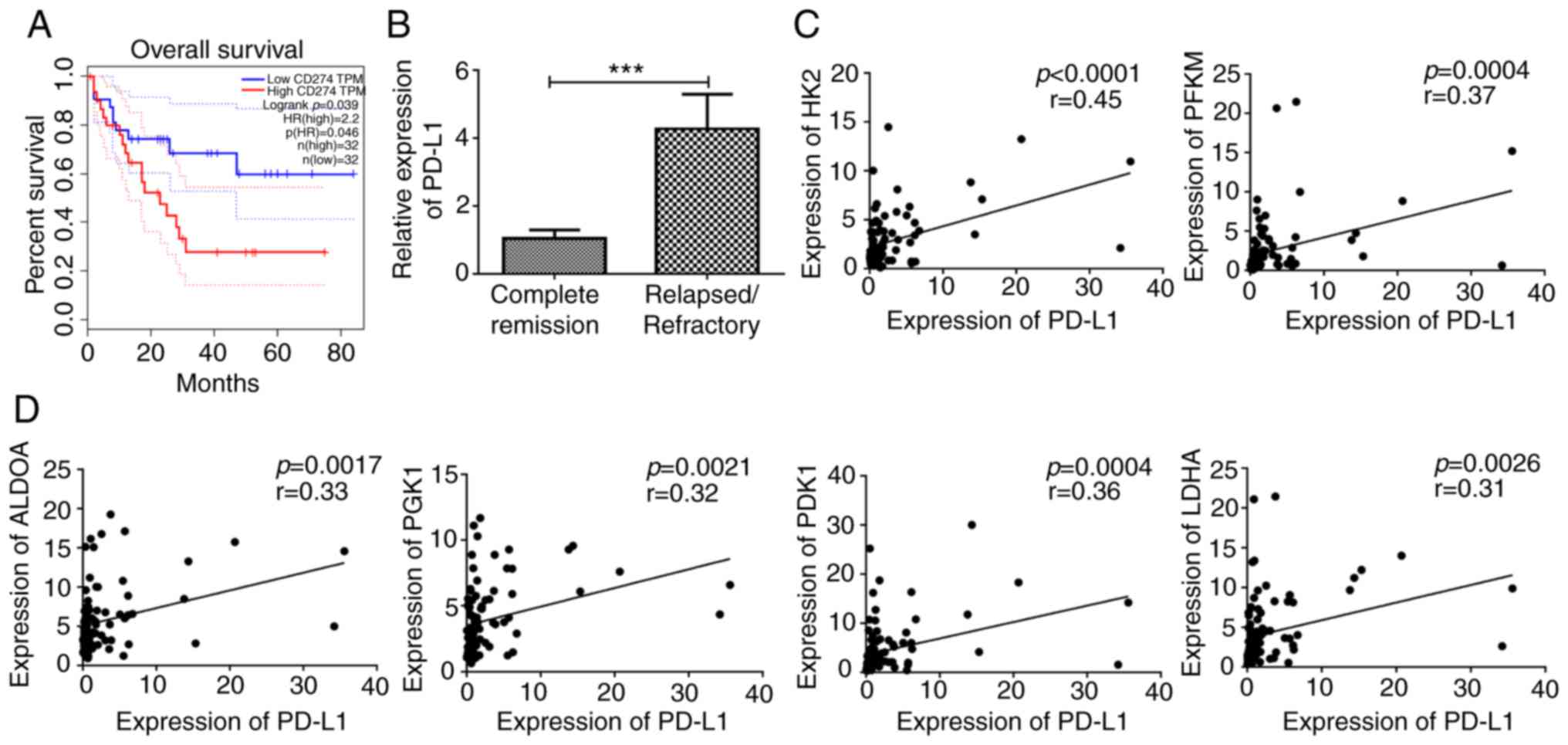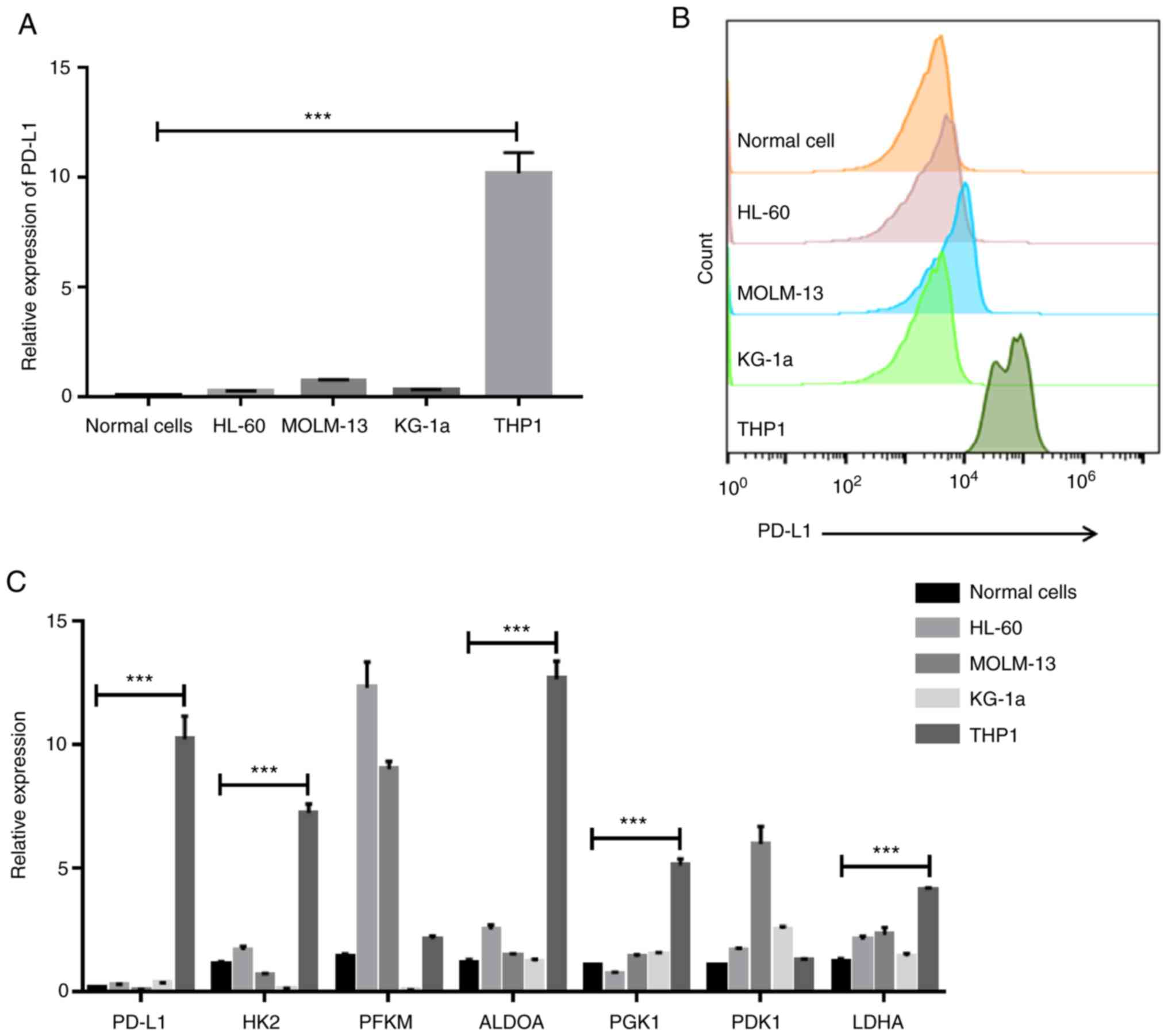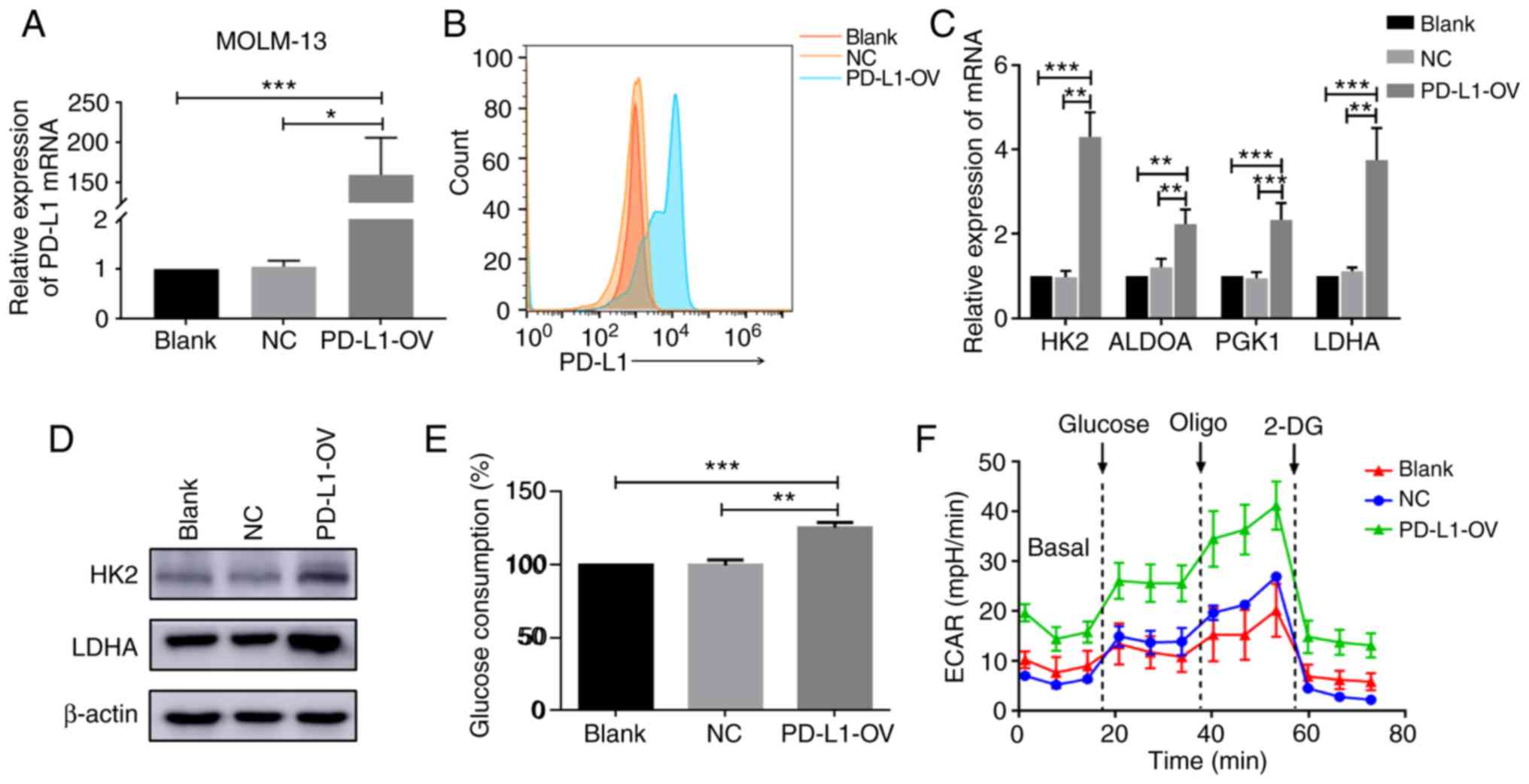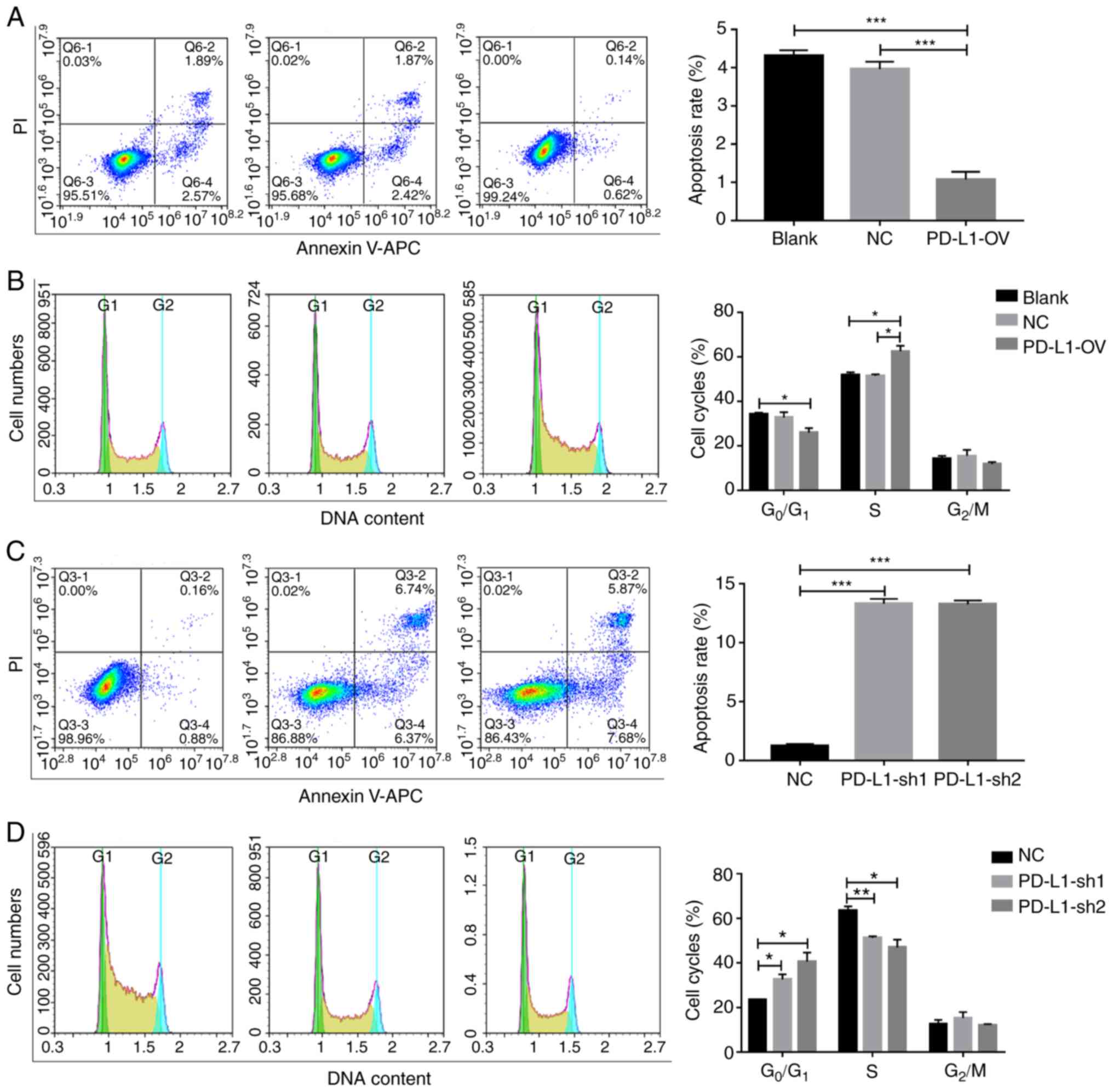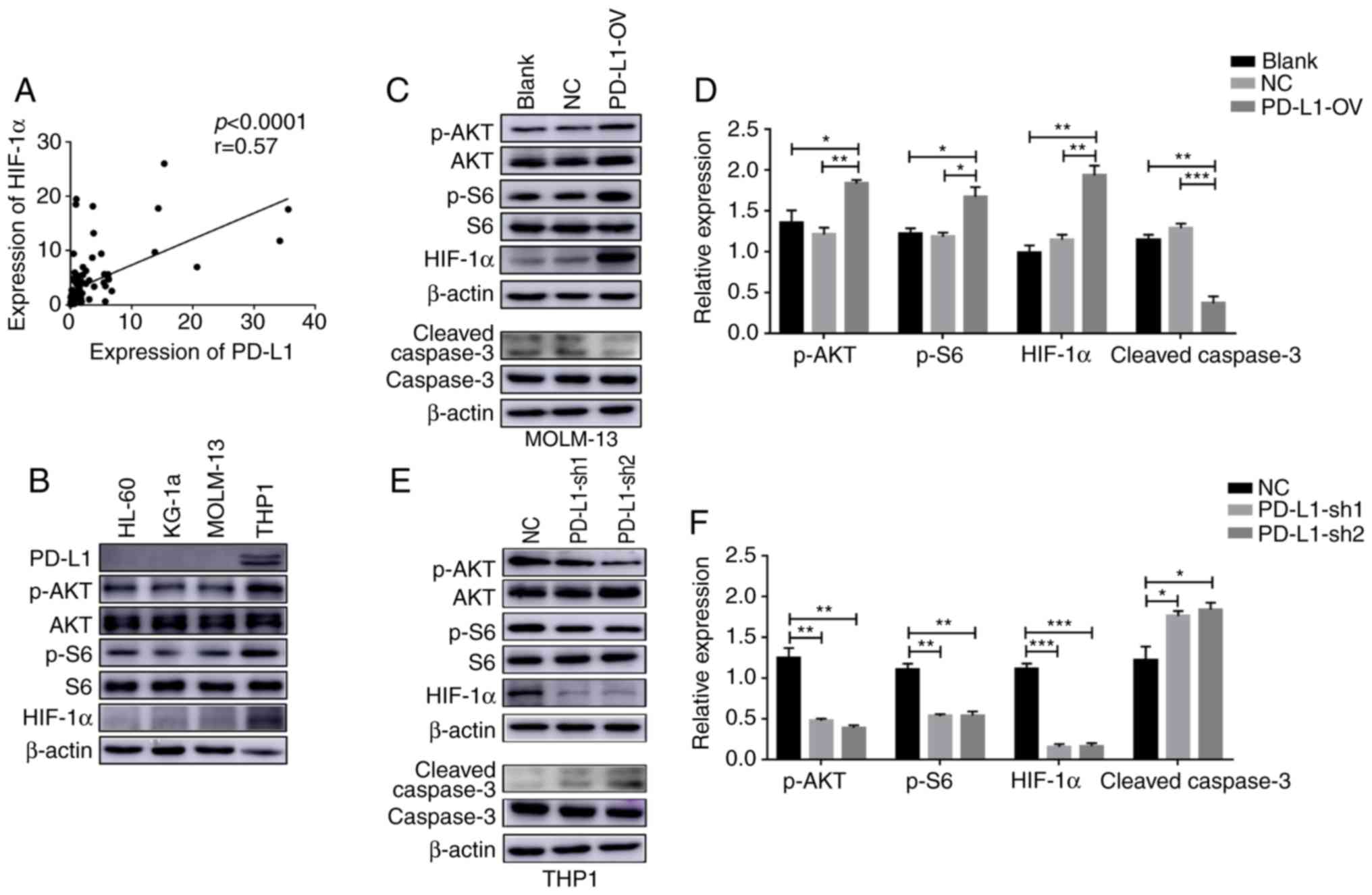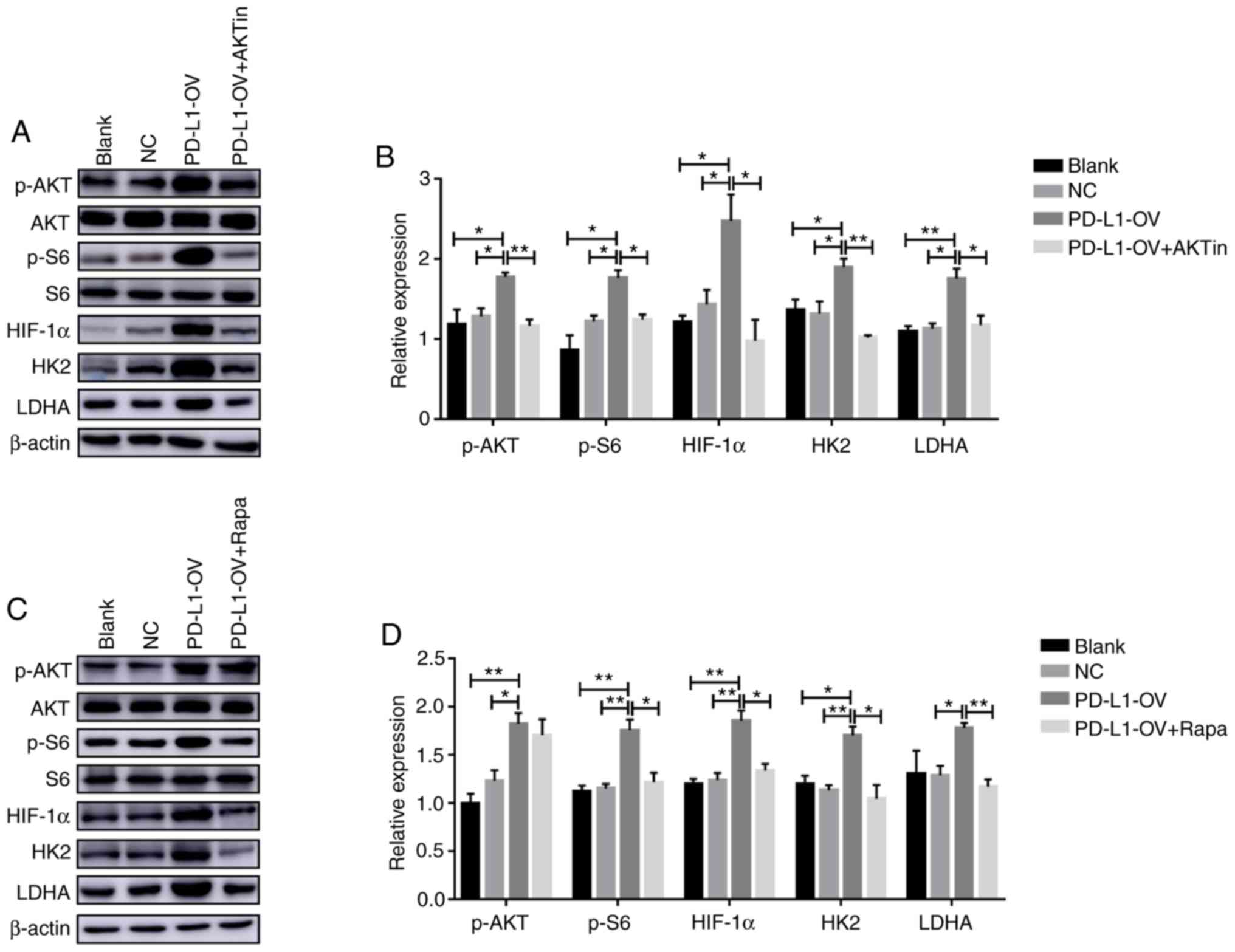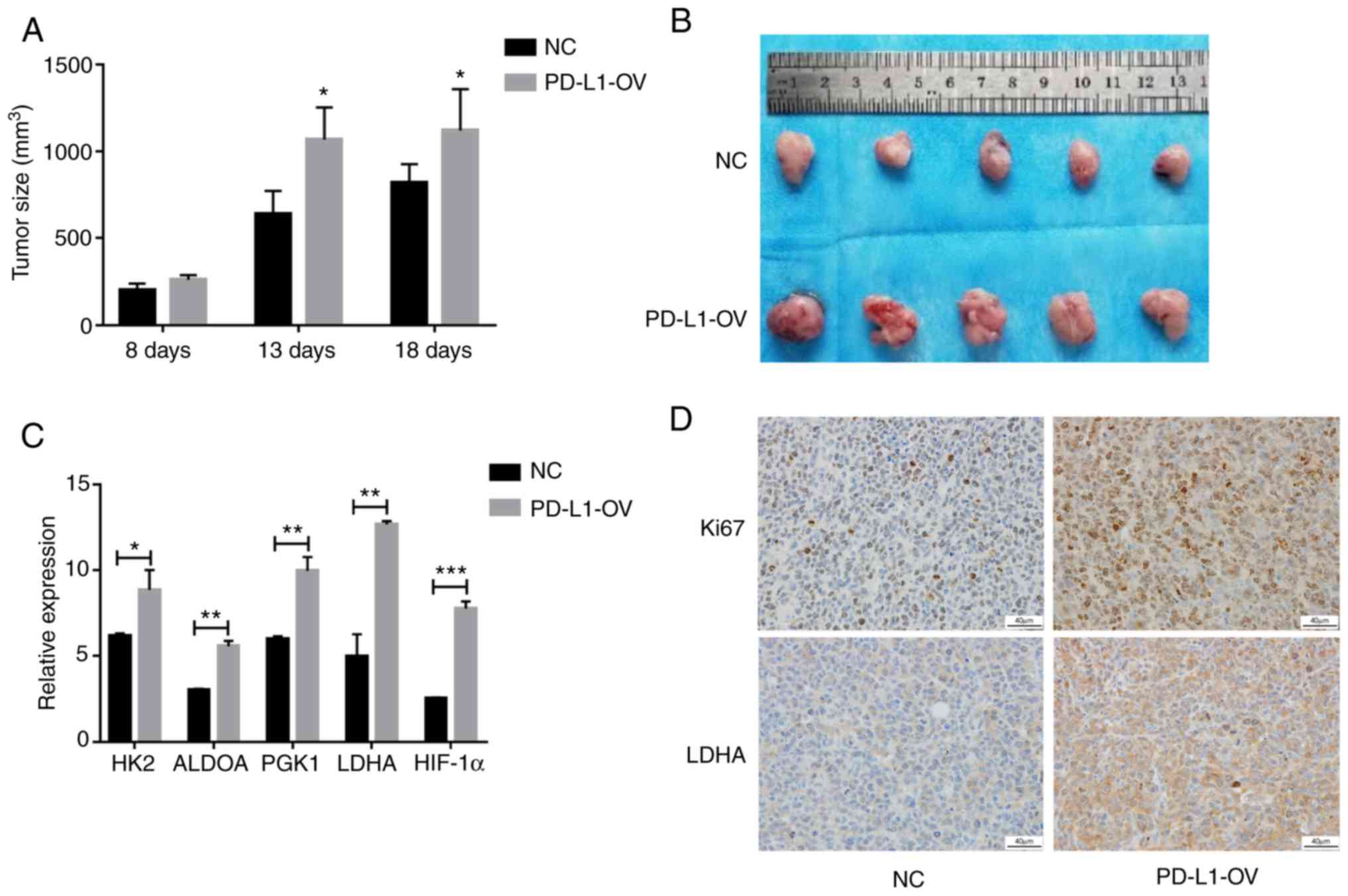|
1
|
Liu Y, Lu R, Cui W, Pang Y, Liu C, Cui L,
Qian T, Quan L, Dai Y, Jiao Y, et al: High IFITM3 expression
predicts adverse prognosis in acute myeloid leukemia. Cancer Gene
Ther. Mar 29–2019.(Epub ahead of print). View Article : Google Scholar
|
|
2
|
Jabari M, Allahbakhshian Farsani M, Salari
S, Hamidpour M, Amiri V and Mohammadi MH: Hypoxia-inducible
Factor1-A (HIF1a) and vascular endothelial growth Factor-A (VEGF-A)
expression in de novo AML patients. Asian Pac J Cancer Prev.
20:705–710. 2019. View Article : Google Scholar : PubMed/NCBI
|
|
3
|
Winer ES and Stone RM: Novel therapy in
Acute myeloid leukemia (AML): Moving toward targeted approaches.
Ther Adv Hematol. 10:20406207198606452019. View Article : Google Scholar : PubMed/NCBI
|
|
4
|
Percival MM and Estey EH: Current
treatment strategies for measurable residual disease in patients
with acute myeloid leukemia. Cancer. 125:3121–3130. 2019.
View Article : Google Scholar : PubMed/NCBI
|
|
5
|
Yang X, Pang Y, Zhang J, Shi J, Zhang X,
Zhang G, Yang S, Wang J, Hu K, Wang J, et al: High Expression
levels of ACTN1 and ACTN3 indicate unfavorable prognosis in acute
myeloid leukemia. J Cancer. 10:4286–4292. 2019. View Article : Google Scholar : PubMed/NCBI
|
|
6
|
Yohe S: Molecular genetic markers in acute
myeloid leukemia. J Clin Med. 4:460–478. 2015. View Article : Google Scholar : PubMed/NCBI
|
|
7
|
Mendler JH, Maharry K, Radmacher MD,
Mrózek K, Becker H, Metzeler KH, Schwind S, Whitman SP, Khalife J,
Kohlschmidt J, et al: RUNX1 mutations are associated with poor
outcome in younger and older patients with cytogenetically normal
acute myeloid leukemia and with distinct gene and MicroRNA
expression signatures. J Clin Oncol. 30:3109–3118. 2012. View Article : Google Scholar : PubMed/NCBI
|
|
8
|
Ribas A and Wolchok JD: Cancer
immunotherapy using checkpoint blockade. Science. 359:1350–1355.
2018. View Article : Google Scholar : PubMed/NCBI
|
|
9
|
Zou W and Chen L: Inhibitory B7-family
molecules in the tumour microenvironment. Nat Rev Immunol.
8:467–477. 2008. View
Article : Google Scholar : PubMed/NCBI
|
|
10
|
Li H, Wang Z, Zhang Y, Sun G, Ding B, Yan
L, Liu H, Guan W, Hu Z, Wang S, et al: The immune checkpoint
regulator PDL1 is an independent prognostic biomarker for
biochemical recurrence in prostate cancer patients following
adjuvant hormonal therapy. J Cancer. 10:3102–3111. 2019. View Article : Google Scholar : PubMed/NCBI
|
|
11
|
Gato-Cañas M, Zuazo M, Arasanz H,
Ibañez-Vea M, Lorenzo L, Fernandez-Hinojal G, Vera R, Smerdou C,
Martisova E, Arozarena I, et al: PDL1 signals through conserved
sequence motifs to overcome interferon-mediated cytotoxicity. Cell
Rep. 20:1818–1829. 2017. View Article : Google Scholar : PubMed/NCBI
|
|
12
|
Bertucci F, Finetti P, Perrot D, Leroux A,
Collin F, Le Cesne A, Coindre JM, Blay JY, Birnbaum D and Mamessier
E: PDL1 expression is a poor-prognosis factor in soft-tissue
sarcomas. Oncoimmunology. 6:e12781002017. View Article : Google Scholar : PubMed/NCBI
|
|
13
|
Yoyen-Ermis D, Tunali G, Tavukcuoglu E,
Horzum U, Ozkazanc D, Sutlu T, Buyukasik Y and Esendagli G: Myeloid
maturation potentiates STAT3-mediated atypical IFN-γ signaling and
upregulation of PD-1 ligands in AML and MDS. Sci Rep. 9:116972019.
View Article : Google Scholar : PubMed/NCBI
|
|
14
|
Mussetti A, Pellegrinelli A, Cieri N,
Garzone G, Dominoni F, Cabras A and Montefusco V: PD-L1, LAG3, and
HLA-DR are increasingly expressed during smoldering myeloma
progression. Ann Hematol. 98:1713–1720. 2019. View Article : Google Scholar : PubMed/NCBI
|
|
15
|
Zerdes I, Matikas A, Bergh J, Rassidakis
GZ and Foukakis T: Genetic, transcriptional and post-translational
regulation of the programmed death protein ligand 1 in cancer:
Biology and clinical correlations. Oncogene. 37:4639–4661. 2018.
View Article : Google Scholar : PubMed/NCBI
|
|
16
|
Pavlova NN and Thompson CB: The emerging
hallmarks of cancer metabolism. Cell Metab. 23:27–47. 2016.
View Article : Google Scholar : PubMed/NCBI
|
|
17
|
Ma J, Liu B, Yu D, Zuo Y, Cai R, Yang J
and Cheng J: SIRT3 deacetylase activity confers chemoresistance in
AML via regulation of mitochondrial oxidative phosphorylation. Br J
Haematol. 187:49–64. 2019. View Article : Google Scholar : PubMed/NCBI
|
|
18
|
Gregory MA, Nemkov T, Park HJ, Zaberezhnyy
V, Gehrke S, Adane B, Jordan CT, Hansen KC, D'Alessandro A and
DeGregori J: Targeting glutamine metabolism and redox state for
leukemia therapy. Clin Cancer Res. 25:4079–4090. 2019. View Article : Google Scholar : PubMed/NCBI
|
|
19
|
Boussiotis VA: Molecular and biochemical
aspects of the PD-1 checkpoint pathway. N Engl J Med.
375:1767–1778. 2016. View Article : Google Scholar : PubMed/NCBI
|
|
20
|
Azuma T, Yao S, Zhu G, Flies AS, Flies SJ
and Chen L: B7-H1 is a ubiquitous antiapoptotic receptor on cancer
cells. Blood. 111:3635–3643. 2008. View Article : Google Scholar : PubMed/NCBI
|
|
21
|
Chang CH, Qiu J, O'Sullivan D, Buck MD,
Noguchi T, Curtis JD, Chen Q, Gindin M, Gubin MM, van der Windt GJ,
et al: Metabolic competition in the tumor microenvironment is a
driver of cancer progression. Cell. 162:1229–1241. 2015. View Article : Google Scholar : PubMed/NCBI
|
|
22
|
Poulain L, Sujobert P, Zylbersztejn F,
Barreau S, Stuani L, Lambert M, Palama TL, Chesnais V, Birsen R,
Vergez F, et al: High mTORC1 activity drives glycolysis addiction
and sensitivity to G6PD inhibition in acute myeloid leukemia cells.
Leukemia. 31:2326–2335. 2017. View Article : Google Scholar : PubMed/NCBI
|
|
23
|
Qian S, Li J, Hong M, Zhu Y, Zhao H, Xie
Y, Huang J, Lian Y, Li Y, Wang S, et al: TIGAR cooperated with
glycolysis to inhibit the apoptosis of leukemia cells and
associated with poor prognosis in patients with cytogenetically
normal acute myeloid leukemia. J Hematol Oncol. 9:1282016.
View Article : Google Scholar : PubMed/NCBI
|
|
24
|
Cascone T, McKenzie JA, Mbofung RM, Punt
S, Wang Z, Xu C, Williams LJ, Wang Z, Bristow CA, Carugo A, et al:
Increased tumor glycolysis characterizes immune resistance to
adoptive T cell therapy. Cell Metab. 27:977–987.e4. 2018.
View Article : Google Scholar : PubMed/NCBI
|
|
25
|
Livak KJ and Schmittgen TD: Analysis of
relative gene expression data using real-time quantitative PCR and
the 2(-Delta Delta C(T)) method. Methods. 25:402–408. 2001.
View Article : Google Scholar : PubMed/NCBI
|
|
26
|
Liu CC, Wang H, Wang WD, Wang L, Liu WJ,
Wang JH, Geng QR and Lu Y: ENO2 promotes cell proliferation,
glycolysis, and glucocorticoid-resistance in acute lymphoblastic
leukemia. Cell Physiol Biochem. 46:1525–1535. 2018. View Article : Google Scholar : PubMed/NCBI
|
|
27
|
Tang Z, Li C, Kang B, Gao G, Li C and
Zhang Z: GEPIA: A web server for cancer and normal gene expression
profiling and interactive analyses. Nucleic Acids Res. 45:W98–W102.
2017. View Article : Google Scholar : PubMed/NCBI
|
|
28
|
Fan K, Fan Z, Cheng H, Huang Q, Yang C,
Jin K, Luo G, Yu X and Liu C: Hexokinase 2 dimerization and
interaction with voltage-dependent anion channel promoted
resistance to cell apoptosis induced by gemcitabine in pancreatic
cancer. Cancer Med. 8:5903–5915. 2019. View Article : Google Scholar : PubMed/NCBI
|
|
29
|
Wang L, Shen S, Xiao H, Ding F, Wang M, Li
G and Hu F: ARHGAP24 inhibits cell proliferation and cell cycle
progression and induces apoptosis of lung cancer via a
STAT6-WWP2-P27 axis. Carcinogenesis. Aug 20–2019.(Epub ahead of
print). View Article : Google Scholar :
|
|
30
|
Harrison JS, Rameshwar P, Chang V and
Bandari P: Oxygen saturation in the bone marrow of healthy
volunteers. Blood. 99:3942002. View Article : Google Scholar : PubMed/NCBI
|
|
31
|
Liu J, Ren Y, Hou Y, Zhang C, Wang B, Li
X, Sun R and Liu J: Dihydroartemisinin induces endothelial cell
autophagy through suppression of the Akt/mTOR pathway. J Cancer.
10:6057–6064. 2019. View Article : Google Scholar : PubMed/NCBI
|
|
32
|
Baccelli I, Gareau Y, Lehnertz B, Gingras
S, Spinella JF, Corneau S, Mayotte N, Girard S, Frechette M,
Blouin-Chagnon V, et al: Mubritinib targets the electron transport
chain complex I and reveals the landscape of OXPHOS dependency in
acute myeloid leukemia. Cancer Cell. 36:84–99.e8. 2019. View Article : Google Scholar : PubMed/NCBI
|
|
33
|
Pollyea DA, Stevens BM, Jones CL, Winters
A, Pei S, Minhajuddin M, D'Alessandro A, Culp-Hill R, Riemondy KA,
Gillen AE, et al: Venetoclax with azacitidine disrupts energy
metabolism and targets leukemia stem cells in patients with acute
myeloid leukemia. Nat Med. 24:1859–1866. 2018. View Article : Google Scholar : PubMed/NCBI
|
|
34
|
Xu M, Seneviratne AK and Schimmer AD:
Phospholipid metabolism regulates AML growth and stemness. Aging
(Albany NY). 11:3895–3897. 2019. View Article : Google Scholar : PubMed/NCBI
|
|
35
|
Yang J, Ren B, Yang G, Wang H, Chen G, You
L, Zhang T and Zhao Y: The enhancement of glycolysis regulates
pancreatic cancer metastasis. Cell Mol Life Sci. Aug 20–2019.(Epub
ahead of print).
|
|
36
|
Yeung C, Gibson AE, Issaq SH, Oshima N,
Baumgart JT, Edessa LD, Rai G, Urban DJ, Johnson MS, Benavides GA,
et al: Targeting glycolysis through inhibition of lactate
dehydrogenase impairs tumor growth in preclinical models of Ewing
sarcoma. Cancer Res. 79:5060–5073. 2019. View Article : Google Scholar : PubMed/NCBI
|
|
37
|
Ban D, Hua S, Zhang W, Shen C, Miao X and
Liu W: Costunolide reduces glycolysis-associated activation of
hepatic stellate cells via inhibition of hexokinase-2. Cell Mol
Biol Lett. 24:522019. View Article : Google Scholar : PubMed/NCBI
|
|
38
|
Nakazato K, Mogushi K, Kayamori K,
Tsuchiya M, Takahashi KI, Sumino J, Michi Y, Yoda T and Uzawa N:
Glucose metabolism changes during the development and progression
of oral tongue squamous cell carcinomas. Oncol Lett. 18:1372–1380.
2019.PubMed/NCBI
|
|
39
|
Cui L, Cheng Z, Liu Y, Dai Y, Pang Y, Jiao
Y, Ke X, Cui W, Zhang Q, Shi J and Fu L: Overexpression of PDK2 and
PDK3 reflects poor prognosis in acute myeloid leukemia. Cancer Gene
Ther. Dec 22–2018.(Epub ahead of print). View Article : Google Scholar
|
|
40
|
Song K, Li M, Xu X, Xuan LI, Huang G and
Liu Q: Resistance to chemotherapy is associated with altered
glucose metabolism in acute myeloid leukemia. Oncol Lett.
12:334–342. 2016. View Article : Google Scholar : PubMed/NCBI
|
|
41
|
Wu Z, Zhang L, Peng J, Xu S, Zhou L, Lin
Y, Wang Y and Lu J, Yin W and Lu J: Predictive and prognostic value
of PDL1 protein expression in breast cancer patients in neoadjuvant
setting. Cancer Biol Ther. 20:941–947. 2019. View Article : Google Scholar : PubMed/NCBI
|
|
42
|
Zheng A, Li F, Chen F, Zuo J, Wang L, Wang
Y, Chen S, Xiao B and Tao Z: PD-L1 promotes head and neck squamous
cell carcinoma cell growth through mTOR signaling. Oncol Rep.
41:2833–2843. 2019.PubMed/NCBI
|
|
43
|
Li H, Li CW, Li X, Ding Q, Guo L, Liu S,
Liu C, Lai CC, Hsu JM, Dong Q, et al: MET inhibitors promote liver
tumor evasion of the immune response by stabilizing PDL1.
Gastroenterology. 156:1849–1861.e13. 2019. View Article : Google Scholar : PubMed/NCBI
|
|
44
|
Sun J, Jiang W, Tian D, Guo Q and Shen Z:
Icotinib inhibits the proliferation of hepatocellular carcinoma
cells in vitro and in vivo dependently on EGFR activation and PDL1
expression. Onco Targets Ther. 11:8227–8237. 2018. View Article : Google Scholar : PubMed/NCBI
|
|
45
|
Shi J, Wang H, Feng W, Huang S, An J, Qiu
Y and Wu K: Long non-coding RNA HOTTIP promotes hypoxia-induced
glycolysis through targeting miR-615-3p/HMGB3 axis in non-small
cell lung cancer cells. Eur J Pharmacol. 862:1726152019. View Article : Google Scholar : PubMed/NCBI
|
|
46
|
Liu L, Lei B, Wang L, Chang C, Yang H, Liu
J, Huang G and Xie W: Protein kinase C-iota-mediated glycolysis
promotes non-small-cell lung cancer progression. Onco Targets Ther.
12:5835–5848. 2019. View Article : Google Scholar : PubMed/NCBI
|
|
47
|
Chen Y and Zhu W: Knockdown of the Sonic
Hedgehog (SHH) gene inhibits proliferation of Hep3B and SMMC-7721
hepatocellular carcinoma cells via the PI3K/Akt/PCK1 signaling
pathway. Med Sci Monit. 25:6023–6033. 2019. View Article : Google Scholar : PubMed/NCBI
|















